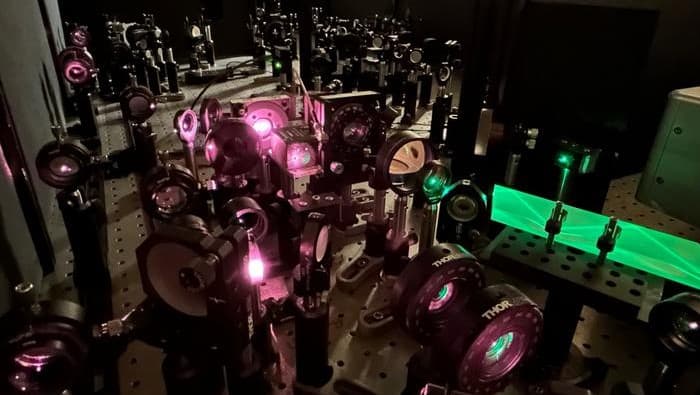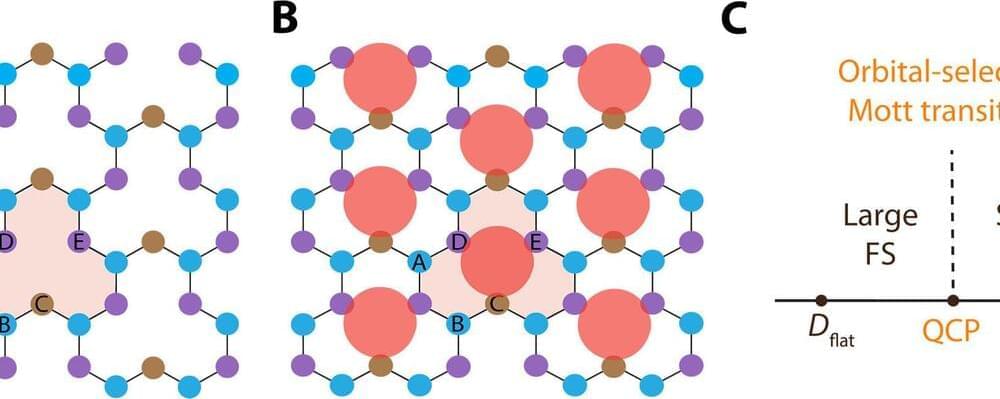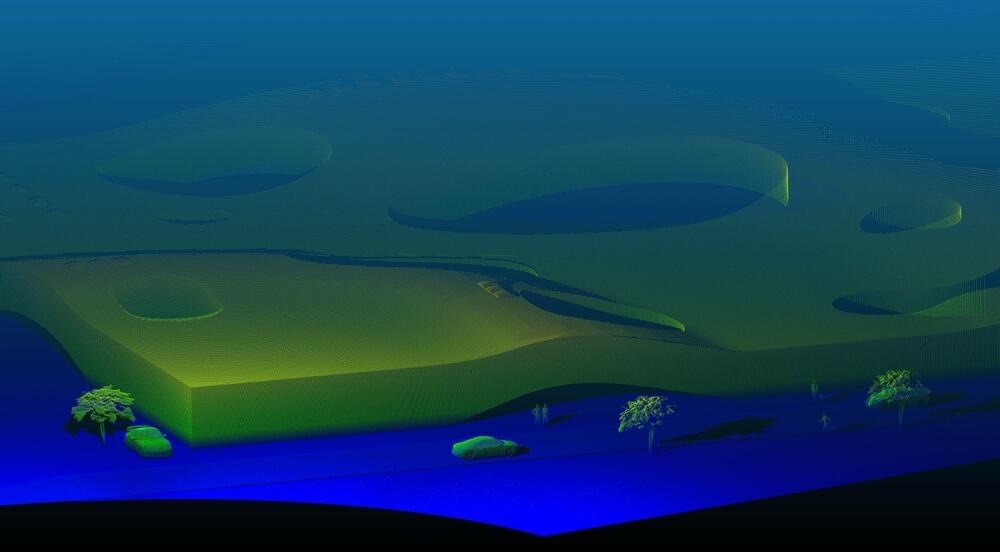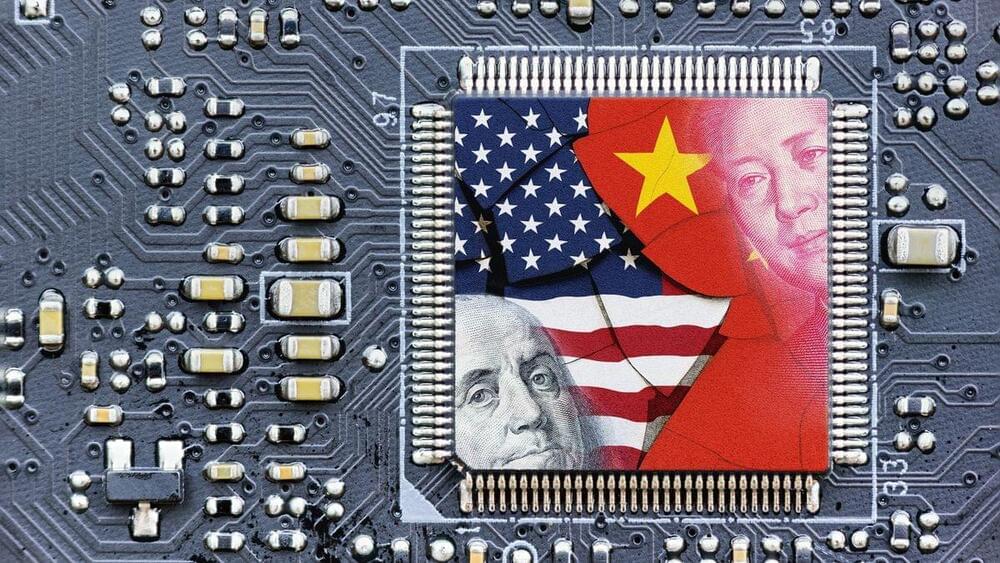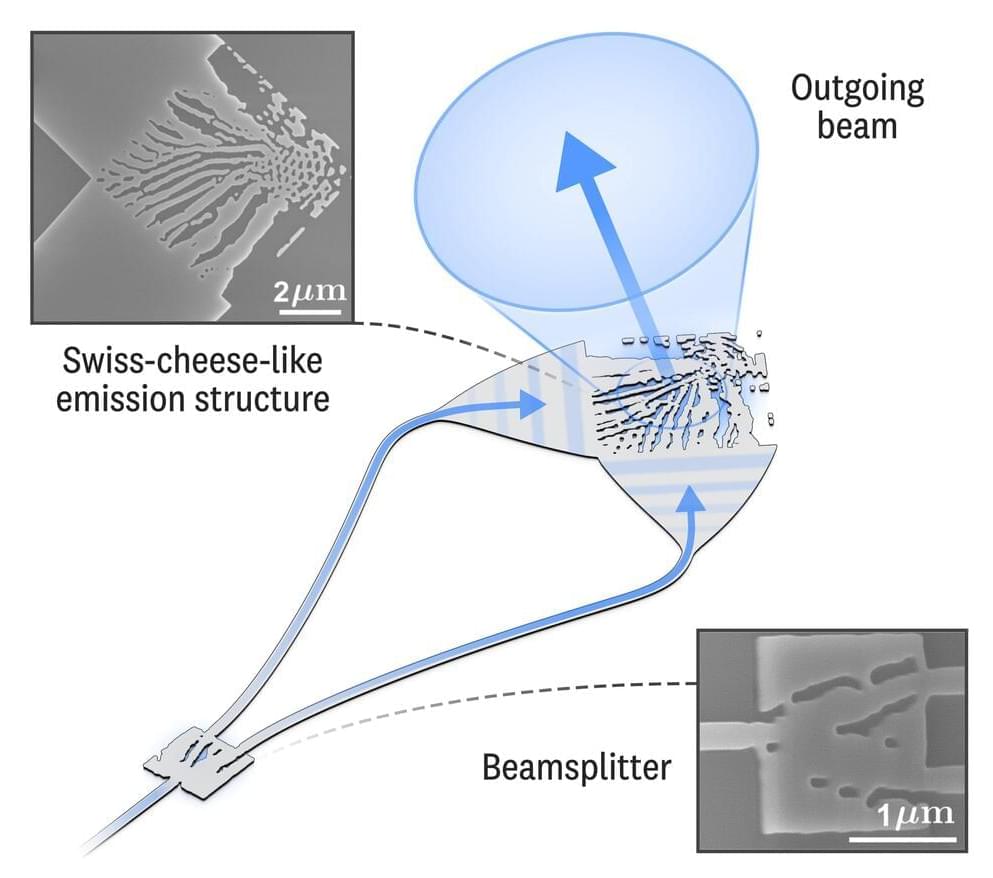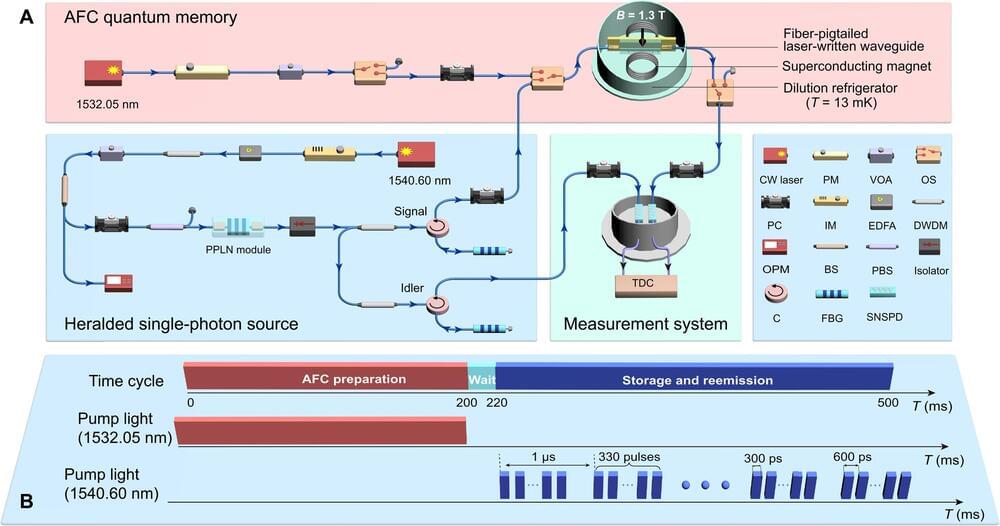Archive for the ‘computing’ category: Page 224
Aug 5, 2023
In some materials, immutable topological states can be entangled with other manipulable quantum states
Posted by Saúl Morales Rodriguéz in categories: computing, particle physics, quantum physics
Rice University physicists have shown that immutable topological states, which are highly sought for quantum computing, can be entangled with other manipulable quantum states in some materials.
“The surprising thing we found is that in a particular kind of crystal lattice, where electrons become stuck, the strongly coupled behavior of electrons in d atomic orbitals actually act like the f orbital systems of some heavy fermions,” said Qimiao Si, co-author of a study about the research in Science Advances.
The unexpected find provides a bridge between subfields of condensed matter physics that have focused on dissimilar emergent properties of quantum materials. In topological materials, for example, patterns of quantum entanglement produce “protected,” immutable states that could be used for quantum computing and spintronics. In strongly correlated materials, the entanglement of billions upon billions of electrons gives rise to behaviors like unconventional superconductivity and the continual magnetic fluctuations in quantum spin liquids.
Aug 3, 2023
The Dawn of a New Era: A New Type of Quantum Bit Achieved in Semiconductor Nanostructures
Posted by Saúl Morales Rodriguéz in categories: computing, nanotechnology, quantum physics
A German-Chinese research team has successfully created a quantum bit in a semiconductor nanostructure. Using a special energy transition, the researchers created a superposition state in a quantum dot – a tiny area of the semiconductor – in which an electron hole simultaneously possessed two different energy levels. Such superposition states are fundamental for quantum computing.
Previously, the induction of such a state necessitated a large-scale, free-electron laser capable of emitting light in the terahertz range. Unfortunately, this wavelength was too long to accurately focus the beam on the quantum dot. This team, however, achieved the excitation with two carefully calibrated, short-wavelength optical laser pulses.
The team headed by Feng Liu from Zhejiang University in Hangzhou, together with a group led by Dr. Arne Ludwig from Ruhr University Bochum and other researchers from China and the UK, report their findings in the journal Nature Nanotechnology, published online on July 24, 2023.
Aug 2, 2023
3D integration enables ultralow-noise isolator-free lasers in silicon photonics
Posted by Dan Breeden in categories: computing, physics
Following the path of electronic integrated circuits (EICs), silicon (Si) photonics holds promises to enable photonic integrated circuits (PICs) with high densities, advanced functionality and portability. Although various Si photonics foundries are rapidly developing PIC capabilities—enabling volume production of modulators, photodetectors and most recently lasers—Si PICs have yet to achieve the stringent requirements on laser noise and overall system stability imposed by many applications such as microwave oscillators, atomic physics and precision metrology9,10,11. Semiconductor lasers must strongly suppress amplified-spontaneous-emission noise to achieve narrow linewidth for these applications12. They will also require isolation from the rest of the optical system, otherwise the laser source will be sensitive to back-reflections from downstream optical components that are beyond the control of the PIC designer13. In many integrated photonic solutions, a bulk optical isolator must be inserted between the laser chip and the rest of the system, significantly increasing the complexity, as well as the cost of assembly and packaging14.
To enrich the capabilities of Si PICs and avoid multi-chip optical packaging, non-group-IV materials need to be heterogeneously integrated to enable crucial devices, including high-performance lasers, amplifiers and isolators15,16,17. It has now been widely acknowledged that group III–V materials are required to provide efficient optical gain for semiconductor lasers and amplifiers in Si photonics regardless of the integration architecture, but concerns still remain for a complementary metal–oxide–semiconductor (CMOS) fab to incorporate magnetic materials, which are currently used in industry-standard optical isolators18.
Fortunately, a synergistic path towards ultralow laser noise and low feedback sensitivity exists—using ultrahigh-quality-factor (Q) cavities for lasers that not only reduce the phase noise but also enhance the feedback tolerance to downstream links. These effects scale with the cavity Q and ultrahigh–Q cavities would thus endow integrated lasers with unprecedented coherence and stability19,20. The significance is twofold. First, the direct integration of ultralow-noise lasers on Si PICs without the need for optical isolators simplifies PIC fabrication and packaging. Furthermore, this approach does not introduce magnetic materials to a CMOS fab as isolators are not obligatory for such complete PICs.
Aug 2, 2023
The internet could soon reach homes and offices faster through LED devices
Posted by Gemechu Taye in categories: computing, internet
Scientists have discovered a new way to accomplish fast data transmissions through light-emitting diode (LED) bulbs.
While research has progressed in significantly optimizing light-emitting diodes (LEDs), the modulation characteristics of perovskite LEDs remain unclear.
In recent developments, scientists have discovered a new way to transmit data quickly through LEDs. This could allow homes and offices to use the fast internet through lights instead of setting up a wifi router.
Aug 1, 2023
3D Animation Captures Viral Infection in Action
Posted by Shubham Ghosh Roy in categories: biotech/medical, computing, genetics
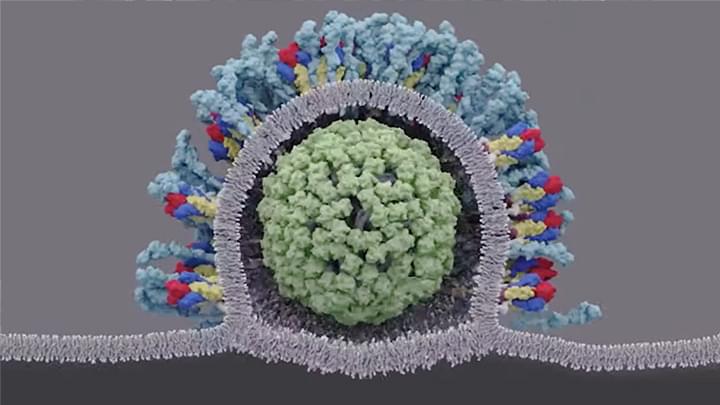
With the summer holiday season now in full swing, the blog will also swing into its annual August series. For most of the month, I will share with you just a small sampling of the colorful videos and snapshots of life captured in a select few of the hundreds of NIH-supported research labs around the country.
To get us started, let’s turn to the study of viruses. Researchers now can generate vast amounts of data relatively quickly on a virus of interest. But data are often displayed as numbers or two-dimensional digital images on a computer screen. For most virologists, it’s extremely helpful to see a virus and its data streaming in three dimensions. To do so, they turn to a technological tool that we all know so well: animation.
Continue reading “3D Animation Captures Viral Infection in Action” »
Aug 1, 2023
Using chaotic inputs to improve microcomb-based parallel ranging
Posted by Dan Breeden in category: computing
The transition to chaos is ubiquitous in nonlinear systems. Continuous-wave-driven photonic-chip-based Kerr microresonators exhibit spatiotemporal chaos, also known as chaotic modulation instability.
For more than fifteen years such modulation instability states have been considered impractical for applications compared to their coherent-light-state counterparts, such as soliton states. The latter have been the centerpiece for numerous high-profile application demonstrations, from long-range optical communication to photonic computing.
Now, researchers from the group of Tobias Kippenberg at EPFL have found a new way to harness the unique features of chaotic frequency combs to implement unambiguous and interference-immune massively parallel laser ranging by utilizing the intrinsic random amplitude and phase modulation of the chaotic comb lines.
Aug 1, 2023
U.S. Tech Sanctions Against China Are Starting to Bite Hard
Posted by Dan Breeden in category: computing
The U.S. plans to slowly choke china’s access to leading-edge chips and semiconductor manufcturing equipment seems to be bearing fruits, as imports of both chips and fabrication tools fell by over 20%.
Aug 1, 2023
Photonic chip transforms single beam of light into multiple beams, each with a panoply of different properties
Posted by Genevieve Klien in categories: biotech/medical, computing, quantum physics
Researchers at the National Institute of Standards and Technology (NIST) have devised a photonic circuit on a chip that transforms a single incoming beam of laser light into a panoply of new beams, each with a host of different optical properties.
The newly generated beams—which retain the frequency of the original beam—simultaneously exit the circuit at different locations along the chip. That allows scientists and engineers to select the specific characteristics of one or more beams needed for a particular application.
Precision shaping and controlling beams of visible light are critical for diagnosing and studying human diseases, trapping atoms that form the basis of the world’s most accurate clocks, quantum computing, and many other quantum-based technologies.
Aug 1, 2023
Telecom-band-integrated multimode photonic quantum-memory
Posted by Dan Breeden in categories: computing, quantum physics
Quantum memory that depends on quantum-band integration is a key building block used to develop quantum networks that are compatible with fiber communication infrastructures. Quantum engineers and IT specialists have yet to create such a network with large capacity to form an integrated multimode photonic quantum memory at telecom band.
In a new report in Science Advances, Xueying Zhang and a research team in electronic science, physics, and information technology described fiber-integrated multimode storage of a single photon at telecom band on a laser-written chip.
The storage device made of fiber-pigtailed erbium (Er3+) doped lithium niobate (Er3+:LiNbO3), presented a memory system integrated with telecom-band fiber-integrated on-chip components. The outcomes of the study highlight a pathway for future quantum networks to come in to being, based on integrated photonics devices.
